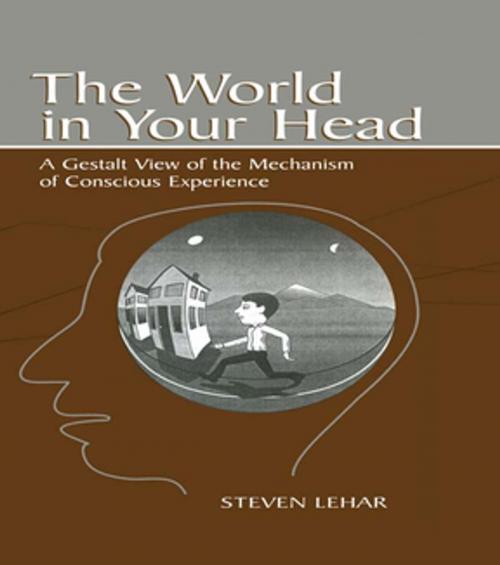The World in Your Head
A Gestalt View of the Mechanism of Conscious Experience
Nonfiction, Health & Well Being, Psychology, Cognitive Psychology| Author: | Steven M. Lehar | ISBN: | 9781135636593 |
| Publisher: | Taylor and Francis | Publication: | January 30, 2003 |
| Imprint: | Psychology Press | Language: | English |
| Author: | Steven M. Lehar |
| ISBN: | 9781135636593 |
| Publisher: | Taylor and Francis |
| Publication: | January 30, 2003 |
| Imprint: | Psychology Press |
| Language: | English |
The World In Your Head: A Gestalt View of the Mechanism of Conscious Experience represents a bold assault on one of the greatest unsolved mysteries in science: the nature of consciousness and the human mind.
Rather than examining the brain and nervous system to see what they tell us about the mind, this book begins with an examination of conscious experience to see what it can tell us about the brain.
Through this analysis, the first and most obvious observation is that consciousness appears as a volumetric spatial void, containing colored objects and surfaces. This reveals that the representation in the brain takes the form of an explicit volumetric spatial model of external reality. Therefore, the world we see around us is not the real world itself, but merely a miniature virtual-reality replica of that world in an internal representation. In fact, the phenomena of dreams and hallucinations clearly demonstrate the capacity of the brain to construct complete virtual worlds even in the absence of sensory input. Perception is somewhat like a guided hallucination, based on sensory stimulation.
This insight allows us to examine the world of visual experience not as scientists exploring the external world, but as perceptual scientists examining a rich and complex internal representation. This unique approach to investigating mental function has implications in a wide variety of related fields, including the nature of language and abstract thought, and motor control and behavior. It also has implications to the world of music, art, and dance, showing how the patterns of regularity and periodicity in space and time--apparent in those aesthetic domains--reflect the periodic basis set of the underlying harmonic resonance representation in the brain.
The World In Your Head: A Gestalt View of the Mechanism of Conscious Experience represents a bold assault on one of the greatest unsolved mysteries in science: the nature of consciousness and the human mind.
Rather than examining the brain and nervous system to see what they tell us about the mind, this book begins with an examination of conscious experience to see what it can tell us about the brain.
Through this analysis, the first and most obvious observation is that consciousness appears as a volumetric spatial void, containing colored objects and surfaces. This reveals that the representation in the brain takes the form of an explicit volumetric spatial model of external reality. Therefore, the world we see around us is not the real world itself, but merely a miniature virtual-reality replica of that world in an internal representation. In fact, the phenomena of dreams and hallucinations clearly demonstrate the capacity of the brain to construct complete virtual worlds even in the absence of sensory input. Perception is somewhat like a guided hallucination, based on sensory stimulation.
This insight allows us to examine the world of visual experience not as scientists exploring the external world, but as perceptual scientists examining a rich and complex internal representation. This unique approach to investigating mental function has implications in a wide variety of related fields, including the nature of language and abstract thought, and motor control and behavior. It also has implications to the world of music, art, and dance, showing how the patterns of regularity and periodicity in space and time--apparent in those aesthetic domains--reflect the periodic basis set of the underlying harmonic resonance representation in the brain.















